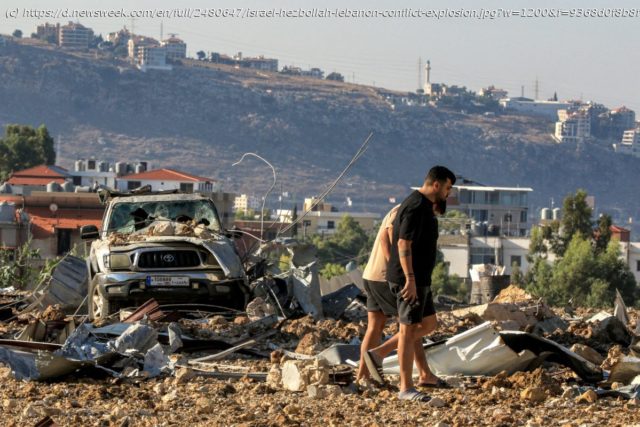The conflict between Israel and Hezbollah has intensified in the past week. How did we get here?
Tensions between Israel and Hezbollah, Lebanon’s powerful Iran-backed militant group, have escalated to extremes over the past week.
What began with attacks on Hezbollah’s communication systems has spiraled into daily cross-border exchanges of rocket fire, raising fears of a wider war. Hundreds have been killed and thousands displaced as both sides ramp up their military actions.
Despite calls for restraint, neither side has shown signs of backing down.
Last week, Hezbollah leader Hassan Nasrallah said the barrages will continue—and Israelis won’t be able to return to homes in the north—until Israel’s campaign against Hamas in Gaza ends.
Meanwhile, Turkish President Recep Tayyip Erdoğan used his United Nations General Assembly speech to compare Israeli Prime Minister Benjamin Netanyahu to Nazi Germany leader Adolf Hitler.What triggered the latest escalation?
The latest wave of violence began with a series of explosive devices targeting Hezbollah’s communication systems. Thousands of pagers and walkie-talkies were rigged to explode remotely across a 48-hour period.
The attacks, attributed to Israel, resulted in the deaths of at least 39 people and severely injured thousands more.
In response, Hezbollah launched a barrage of rockets into northern Israel, prompting daily retaliatory strikes by Israel’s military. The exchanges have led to severe destruction on both sides.
In Lebanon, an additional 500 people have been killed, including senior Hezbollah commanders, and about 2,000 more have been injured.
The United Nations estimates that more than 90,000 Lebanese have been displaced by the fighting.
Meanwhile, Israel has faced repeated rocket attacks, which have sent hundreds of thousands of Israelis in northern towns fleeing to shelters.






